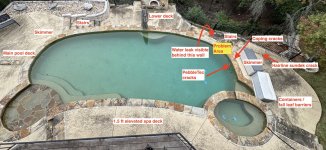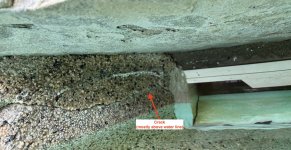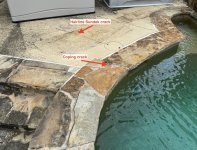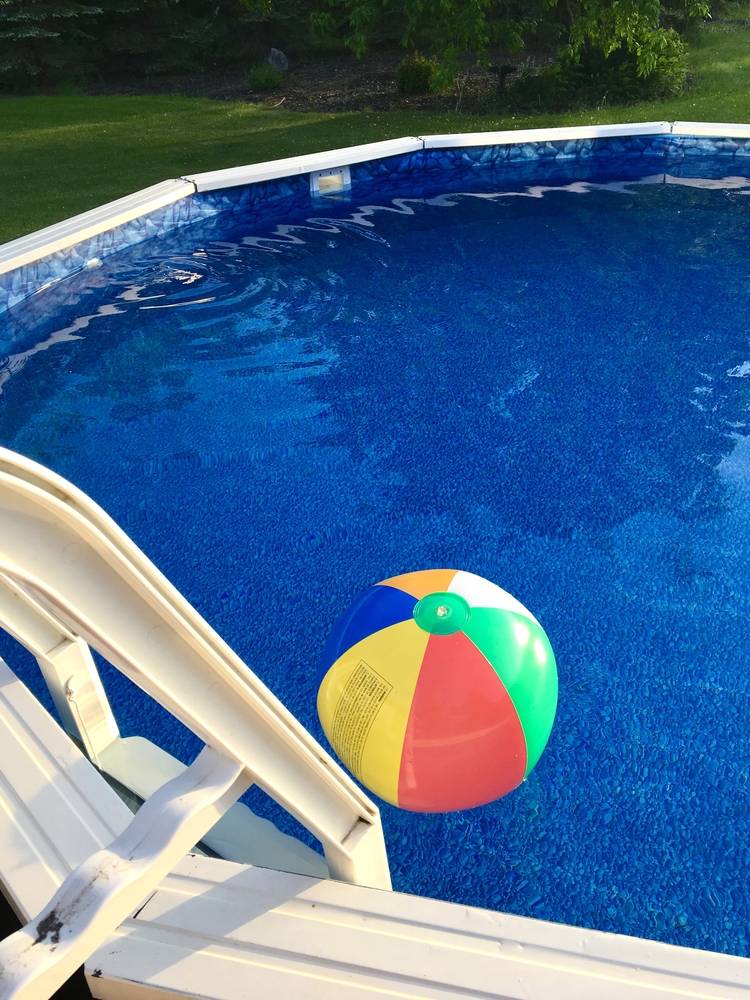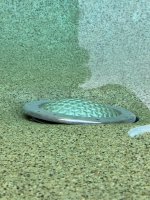Just found my in-ground pool is leaking water out a (lowered) side wall. We built the pool about 12 years ago. Panic has set in, I suspect this could be, or could become, a major problem. Below are some pics annotated and my guess about the cause and leak route. I think cracks in my coping grout have allowed water in, over time that has damaged the underlying gunnite & caused cracks in the PebbleTec near a skimmer, water gets out through there.
Please ask me for any needed info & give me any advice about:

Some cracks in the (hard) grout between coping stones are pretty bad and have worsened over time. The coping perimeter where it joins the deck has a more flexible (and whiter) filler, most of which seems crack-free.

The PebbleTec has cracked near the skimmer. Could this be from damage from the back due to water infiltration through grout cracks? The PebbleTec crack appears mostly a bit above the normal pool water level, but some is also a bit below.

The water leak is visible at the lowered wall by the stairs.

Much of the wall and floor deck near the stairs was wet a week ago when the pool water level was too high, all the way to the top. Lost maybe 1-2" over the past week, so not currently losing a ton of water a day, but WORRIED!
Thank you for any and all advice!!
-- Desmond
Please ask me for any needed info & give me any advice about:
- likely cause (pls. see my best guess and pictures)
- options to fix? Repair coping grout? Seal PebbleTec cracks? Other? Can cracks in PebbleTec be patched above water line? Below? Can PebbleTec repair be color matched reasonably well?
- how urgently does it need to be fixed
- should I DIY or call a pro?
- anything else!

Some cracks in the (hard) grout between coping stones are pretty bad and have worsened over time. The coping perimeter where it joins the deck has a more flexible (and whiter) filler, most of which seems crack-free.

The PebbleTec has cracked near the skimmer. Could this be from damage from the back due to water infiltration through grout cracks? The PebbleTec crack appears mostly a bit above the normal pool water level, but some is also a bit below.

The water leak is visible at the lowered wall by the stairs.

Much of the wall and floor deck near the stairs was wet a week ago when the pool water level was too high, all the way to the top. Lost maybe 1-2" over the past week, so not currently losing a ton of water a day, but WORRIED!
Thank you for any and all advice!!
-- Desmond



